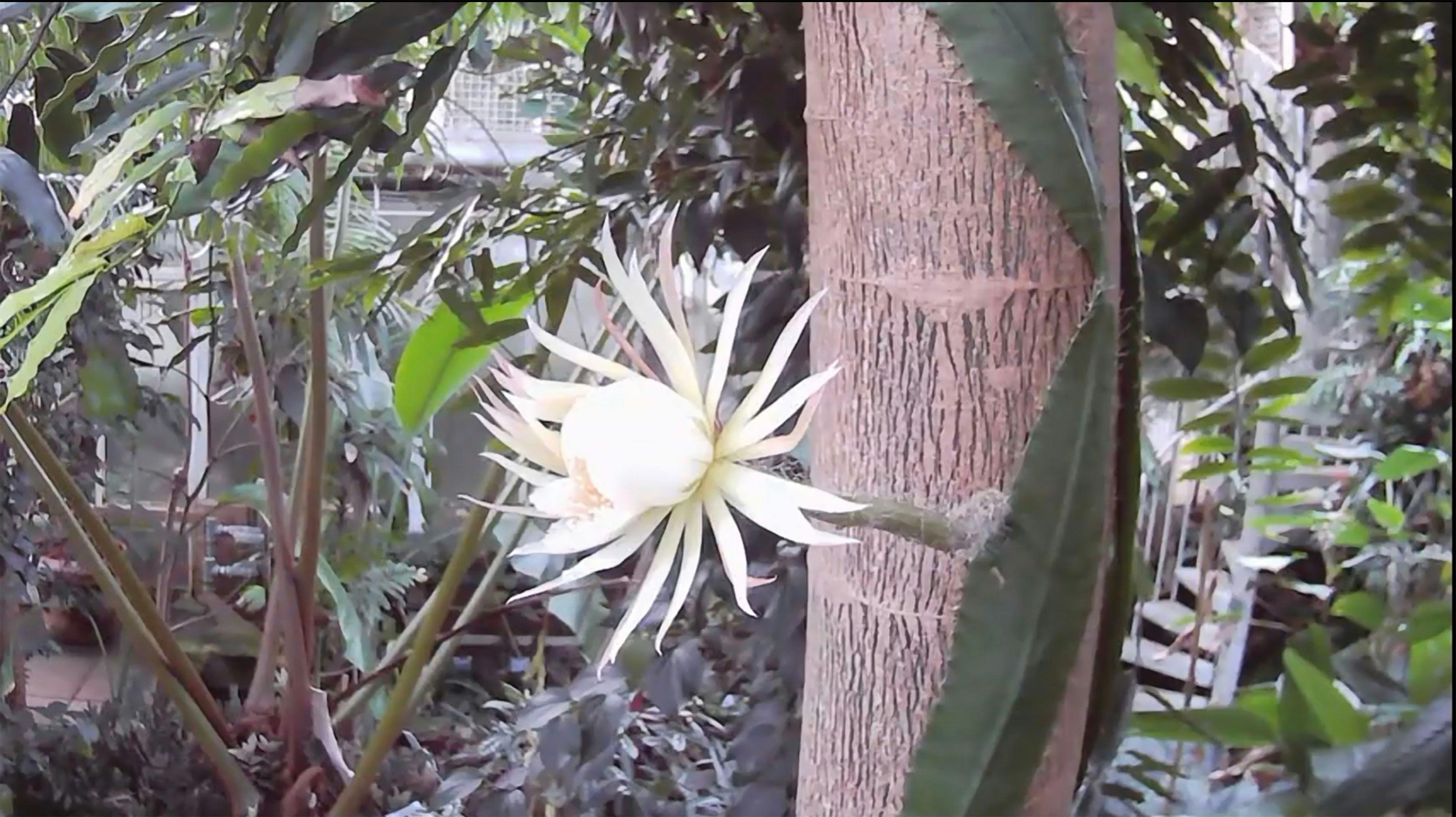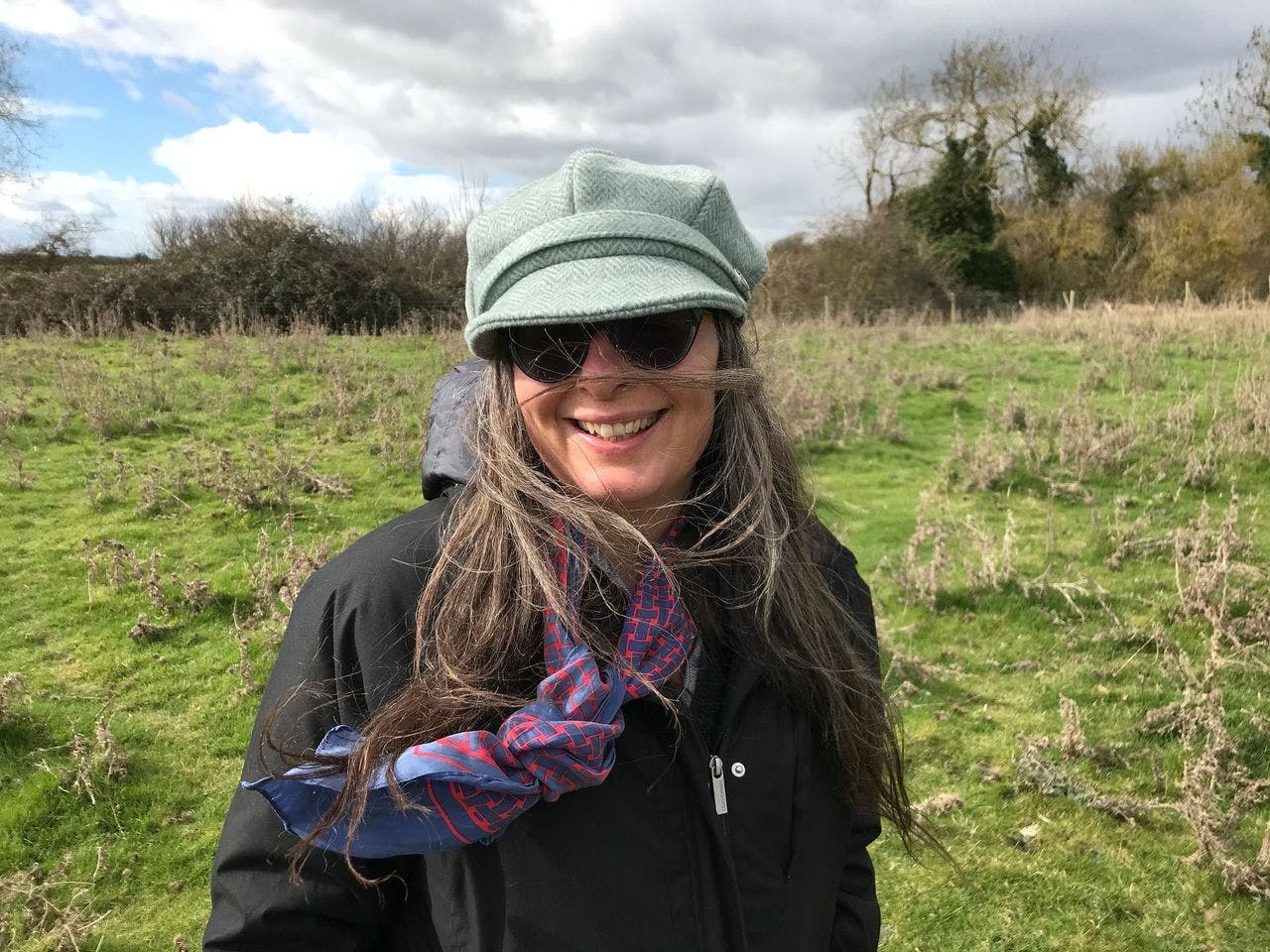“We had not gone far into the river when we found a beautiful igapó and within moments I saw the cactus. I paddled right up to the tree on which it grew, and by standing in the boat could just reach it. It was growing flat as a scarlet transfer against the trunk, for the roots which grow from the back of the leaf secure it to the bark. The broad leaves were fringed with tiny, sharp spines but there was no sign of fruit or flower and I searched the igapó in vain for more of the strange plants”
—Margaret Mee, (‘Through the Cradle of the Red Desert’ , Margaret Mee, 1972).

‘selenicereus’
think of this as a scarlet transfer
of leaves to bark
a transfer against
point seam
scored in the dark bark at his white
goddess of barley (not mine)
day for night

my roots grow
without ceremony economyon the
back
of the leafsister
(Helios)
holds a candle to
made climatedisaster
under what isnew
under stern
understand twigsof tree script
xeroxed
a woodblock

stop printing
things
out
no word
book

Io, Mee
then
anothermoonlove in
with clouds
live-streamed massing
bloodwildfires

personal name
scratched outfor one shown
here:
‘mooncereus’
Kepler named a moon of Jupiter for her (1614)
pollination by selfing
rather than hawkmoths

with marksmade
sharp
weapon
scarlet transfer against
synthesise. condense.
durations of multiple:
observe. search. entangle.
remote. sense.

through screen
news feeddiary of a painter
obsessive watch
efflorescence of

In the early afternoon on Saturday the 20th of February 2021, the moonflower, tended by horticulturalists at the Cambridge Botanic Garden in Cambridge for the last six years, began to open.
*
The economist, Ann Pettifor recently noted that “…environmentalists have treated the ecosystem for too long as almost independent of the dominant economic system based on deregulated, globalised finance” (Pettifor: 2019 xi). The history of poetry about flowers suggests similar partial viewpoints, as if the almost independent standing of poetry and its objects of attention had nothing to do with the forces and economic interests that surround it.
*
And then after another twelve hours, the flower began to close and die.

A moon cactus is an epiphyte which clings to the bark of trees.
In the days running up to the opening of the bud and over the time of its short flowering, the moonflower became an unlikely internet sensation. In addition to the small number of visitors to the glasshouse more than 200,000 watchers, many confined under lockdown restrictions, followed the live feed of the flower from the glasshouse inside their homes.






A moon cactus is an epiphyte which clings
The botanical artist Margaret Mee (1909-1988) first saw the moonflower Selenicereus witti by daylight in 1964 and determined to paint it. She collected a specimen on one of her trips down the Amazon but unfortunately when she returned, she realised that, when they were unloading her canoe, the boatmen had thrown away the prickly leaves that she had so carefully collected.
*
A loss of possibilities, possibilities in loss. A diversion of attention.
*
Over the next twenty-four years she found the plant three more times but until what was to be her final trip to the Amazon in 1988, she never managed to paint it in flower.

Parables of remote sensing:
Cling to sightings or news of change in petal size, angle of stem.
Logging in at all times of the day and night to note the minute progress and decline of the flower.
Watch stubborn as demand
alongside the scrolling of global news channels.
Feed interrupted by dramatic
visitations of bugs
appear late at night on the petals, to be recorded in chat
other parallel ideas
of consumptionat large

Mee’s diaries reveal the attention she gave to the extensive ecosystem surrounding the plant:
“The trunk was a wonderful home with all the roots of the epiphytes packed with tiny plant remains forming a humus for a complete gardenof species. Ants busily foraged and a host of other insects, beetles amongthem, scurried about. The lizard no longer bothered by my presence simply darted from one good feast to another” (Mee, 289).
This attention to the surrounding landscape is also present in her diary, in which she details how the region is altered each time she returns on each of the successive trips that she made to the Amazon over a period of many years. Mee’s diary provides glimpsed details of the creeping deforestation, industrial encroachment, and commercialisation that has beset this landscape and contributed to the worsening effects of climate destabilisation.
*
Writing moonflower, moonflower writing, thinking, and writing as an epiphytic clinging on in entangled and dismayed attention
a scarlet transfer of leaves.
Alder Moon.
1988:Concerning the forest. Muddy pools to market. Boat. Sun damaged. Frazzle burned up in reflect. My face. Reflected by water. Light reflected. Beyond physical my pain on noticing that the charcoal factory had burned all trees of any size. Came then to ancient trees crowned with philodendrons. Curtain of air roots. Bromeliad in arabesque. Parrots. Bacurau taking toll of myriads of insects.
2021:Beech trees arrive after the ice age. Ivy walls cool buildings. Raw materials from new extractive projects continue to be. Ash Moon. Air pollution significantly raises risk of infertility. Cotoneaster absorbs roadside air pollution. A drop in solar activity 42,000 years ago. A planet exposed to high energy particles. Small particles. Inflammation of the body. Pollution particles on the foetal side of placentas. Plans for all cars in Europe to be electric. Rain and ice cause multiple vehicle pile ups in Dallas and Austin. Vaccine passport plan could help Britons holiday in Greece. Struggle for drinking water in Texas. Israel expands nuclear facility. End of Neanderthals linked to flip of Earth’s magnetic poles. Big fish replaced by invasive species. Affluent populations impact on rivers is highest. Thames and Mississippi.
1988: Ember of night cloud. Hung my hammock facing the darkened river. The river already more than twenty feet higher than in 1977. Biological Reserve. Sue and the canoe. Toucans and termites. A fear of raided nests and selling of young birds. Fishermen throwing dynamite to kill and stun. Lunch of piranhas.
Willow Moon.
2021:Tax international flights to raise climate funds for poor countries. Grabs for land and violence against indigenous peoples during pandemic. A one metre hedge mops up the same amount of pollution that a car emits over a 500 mile drive. Hawthorn and privet ease intense summer rainfalls and reduce localised flooding. Beech trees suffer during droughts.
1988:Fly in on big jet. Four hours. Manaus unrecognisable. Cleared of rainforest. Houses and factories. Enlarging Varig tourist hotel. Forests gone. Fazendeiros and charcoal burners. Huge trees draped with philodendrons, bromeliads clung to branches an occasional orchid glows against the green curtain.
2021:Unknown person from past dug up. An anthropomorphic piece of the tool of which he was a part of.
1988:We were excited and optimistic as we planned the search.
2021:Perseverance touches down in search of life. The picture of a Mars volcano. Olympus Mons. Giant rift valley, mourning clouds in this view. How water has been lost from this once more Earth-like planet. Plants linked to lower levels of violence and self-harm in prisons. A need for outdoor space.
1988:After three or four miles by motor canoe up the Parana we entered the igapó. Islands of grass lay across the still water from which grey, weathered trunks stood like skeletons, water up their boughs.
2021:Pollen season is twenty days longer. Worsening allergy season. US return to Paris climate pact. Fatberg London sewer. Line 3 route through Ojibwe nations’ land thick with birch and pine trees. Lakes of wild rice. Threat of Tar sands. When I see news of wildfires raging on the television, I remember the weather.
1988:We were not far from the igapó where Sue had found the plant in 1982, but the vegetation had changed, and the plant had disappeared.
2021:1000 ancient trees felled to replace La forêt in the roof of Notre Dame. A wood burning fire our pollution is superior and necessary. First underground mine in thirty years gets the go ahead. A golden face mask during a protest against the military coup in Yangon, Myanmar. The rapid development as far as we can judge of all higher plants within recent geological times is an abominable mystery gets a new spin. What is higher? How do you measure that?
1988:We entered the igapó in the small canoe which tipped unsteadily as we forced our way through the thorny, touch bushes, when we slid
A large blue Morpho butterfly.
Trinkets for tourists from their wings.
2021:Oil spill from passing ship blackens Israel’s Mediterranean shoreline. Texas freeze led to release of tons of air pollutants as refineries shut. How to protect flamingos from shotgun pellets in Cyprus. UK road trial of electric buses. Cassiopeia can be found in north-western sky this week. She is usually depicted in a sitting position. She is arrogant and vain. 6 degrees.
1988:Again we were disappointed not to find
2021:Low hanging fruit boosts canopy photosynthesis. Aircraft orders dry up. Forest mortality. Distant whine of chainsaw. Rainforest converts to savanna. Predicted switch from storing carbon to emitting it. February 8 rainy days. A. alpina becomes more capable of self-pollination so as to rely less on insects visiting. Detail of an herbarium sheet with the oldest conserved tomato plants of Europe. Italian collection, 1542-1544. Temporal trends in plant traits or changes in plant collection practices. Cardboard cut-outs placed in the stands to represent spectators. The light environment of the lower canopy is subject to continuous and dynamic change across the course of a day, caused by movement of the sun across the sky, sporadic cloud cover and/or movement of upper elements in the canopy caused by wind.
May 1988 from: Journey Fifteen, Brazil, Mee / February 2021: Cambridge.
